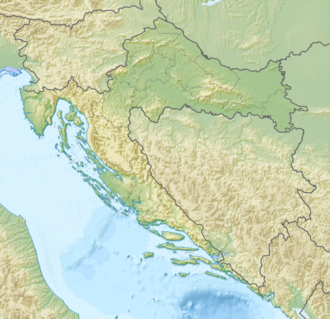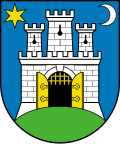 The damage to Zagreb Cathedral's interior was photographed by Ivan Standl. A skeleton is visible in a crypt | |
| Local date | 9 November 1880 |
|---|---|
| Local time | 07:33 |
| Magnitude | 6.3 ML |
| Epicenter | 45°54′N16°06′E / 45.90°N 16.10°E |
| Fault | Medvednica Fault Zone |
| Areas affected | Triune Kingdom of Croatia, Slavonia and Dalmatia, Austria-Hungary |
| Max. intensity | EMS-98 VIII (Heavily damaging) – EMS-98 IX (Destructive) |
| Casualties | 1 dead, 29 seriously injured |
The 1880 earthquake which struck Zagreb, and is also known as The Great Zagreb earthquake, occurred with a moment magnitude of 6.3 on 9 November 1880. Its epicenter was in the Medvednica mountain north of Zagreb. Although only one person was killed in the earthquake, it destroyed or damaged many buildings.

